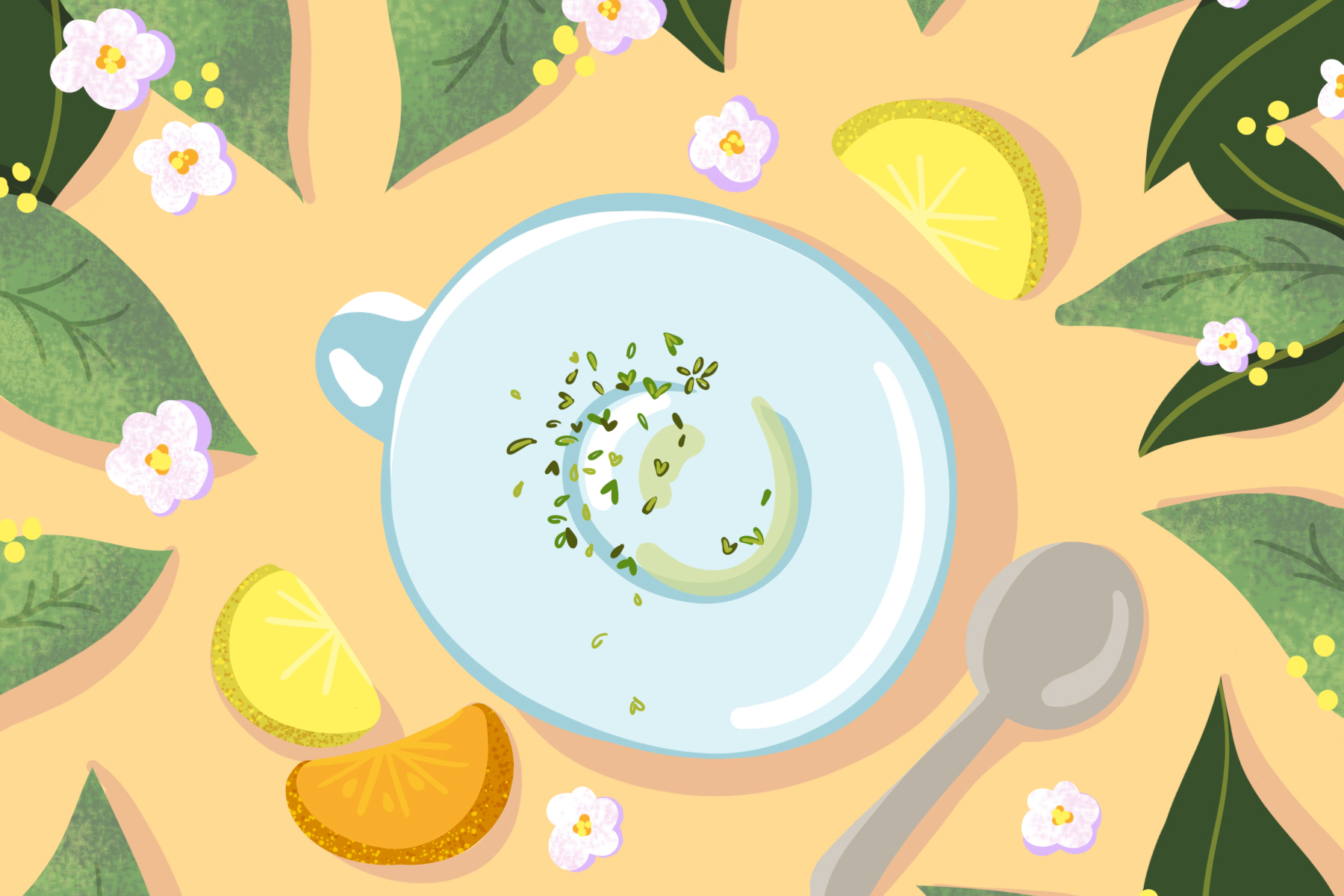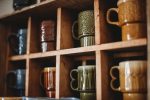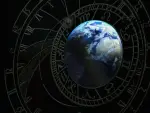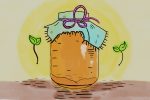Tea-leaf reading, also known as tasseomancy, has existed for centuries. Originated in Asia, popularized in Victorian England and reintroduced to the modern-day conscious by Professor Trelawney’s divination class in Harry Potter, the practice of reading tea leaves is a historic and meaningful way to interpret the future. It is a type of divination art where you identify symbols in the shapes and configurations of tea leaves and interpret their messages.
Traditionally, tea-leaf reading was done in the morning to give you a general idea of how your day would unfold. It’s the throwback version of your daily Co-Star push notification. Reading tea leaves is just one of many forms of divination — or the practice of uncovering the cause of events and foretelling the future.
The History of Divination
Divination is an ancient art spanning countless civilizations and millennia. In Ancient Greece, oracles used freshly slaughtered animal entrails to commune with the gods and foretell the success of a hero’s journey or a ship’s maiden voyage.
Mayan priests appeased their gods with offerings and constructed complex calendars around these divined future events. Shamans in Ancient China threw bones and shells into fires and inspected the cracks for answers, and peasants in the Middle Ages threw sand or grain into fields to read the patterns after the matter fell.
Whether you’re a devout follower of your daily horoscopes or not, there’s something in divination for everyone. The lure of divination, both with tea-leaf readings and other methods, lies in the possibility of “seeing” your own destiny. You hold your own fate in your hands; your choices shape what will happen today, tomorrow and in the distant future.
Although actions can occur out of pure chance, they can also occur as the result of some past cause. The mere act of doing something today sets forces into motion that will inevitably bring about some entirely unforeseen event further down the stream of time. By reading your own future, you could see symbols and signs that unconsciously influence you into choosing a particular venue to dine in tomorrow, which might coincide with the place where you meet your significant other.
The origins of tea-leaf reading as a divination art is speculated to have emerged in Asia, although the practice prevailed in England. Tea was brought into England from China in the 17th century, but the beverage was solely enjoyed by the upper class at the time. With falling tea prices in the 18th century, however, tea became a popular drink of choice, and with it, the increased popularity of tasseomancy.
The lower classes had always been more superstitious than the upper classes, and by the Victorian era, this superstition, combined with a renewed interest in the occult, brought tea-leaf reading into prominence. The practice became popular since it could easily be done at home with very little cost, compared to visiting an established fortuneteller.
Divination Today
Presently, the art of tea-leaf reading is relatively obscure compared to trendier methods of divination, such as astrology or tarot readings. Astrology, which divines your fortune through the planets, stars and your zodiac sign, has recently been popularized by the Co-Star app, which sends quirky daily mantras like, “Your biggest challenge is to avoid becoming dead inside.” Tarot cards are another well-known method of divination that uses specially designed cards and divines the answers through the selection of a hand of cards.
Tea-leaf reading is a powerful, creative and accessible way of exercising your intuition. It is less expensive than building a fancy crystal collection, and it doesn’t require the structure and time needed for tarot cards.
A curious feature of tea-leaf reading, compared to other divination methods, is that teacup fortunes are only horary — that is, they only address the events of the hour or the next 24 hours at most. It is this immediacy, so to speak, that casts the shadows into the cups and shapes the leaves in the dregs. In this way, you would be able to consult the tea leaves once a day and foresee the everyday happenings of life with considerable accuracy.
So, how should you get started with your own readings?
The First Step of Tea-Leaf Reading: Pick a Tea
The best tea to use for readings is a loose-leaf tea of any kind. Teas with whole leaves rather than teas that have been cut are best for tea-leaf readings, as larger leaves will provide a much better flexibility of the symbols. Teabags won’t work here because the leaves are ground too finely to create anything more than particulates at the bottom. Powdered teas like matcha or ginger, although quite tasty and fresh, dissolve entirely and belies the point.
Brew your tea according to tea type. For black tea, freshly boiled water and a steep time of three to five minutes is best. For white or green teas, you’ll want to avoid burning the leaves, which will leave a bitter, acrid taste. Steep for 30 seconds to a minute at a lower temperature, around 90 to 100 degrees Fahrenheit — if you stick a finger into the water, it should feel comfortably warm.
If you usually drink coffee, try black tea, as it is the most caffeinated of all teas due to the oxidation process the leaves go under. Popular black tea flavors are Earl Grey (which is infused with citrus bergamot) and English Breakfast.
If you hate the jitters but are still looking for an energizing start to your day, green tea is the one for you. Jasmine tea is a wonderful choice, as it has a mellow and sweet fragrance. If you are looking for a caffeine-free version, try an herbal tea like chamomile, peppermint or lavender, which can also be a soothing way to wind down your day.
You can go to your local tea and coffee shops to buy loose-leaf tea, purchase them in your local grocery store or buy them online.
The Next Step: Choose a Cup
The best cups for readings are — unsurprisingly — teacups. A teacup, with a wider opening at the top and a smaller bottom, offers the best shape for swirling and reading. Mugs are not ideal for readings; the steps are difficult in a cup with tall, perpendicular sides and a heavy bearing. You will want a cup that is relatively thin and shallow, with a flat, plain interior surface. Brew the tea in a teapot that will allow the leaves to pass through the spout and into your cup. You can also drop a pinch of leaves into the teacup itself and steep the tea there if you do not have a teapot.
The Ritual
Drink the contents of your cup, leaving only the dregs (about a teaspoonful of liquid) and leaves. Take the cup by the handle in your left hand and swirl three times clockwise. Carefully invert it over a saucer and leave it there for a minute to let the liquid drain away.
If you are approaching tea-leaf reading seriously, then you should concentrate on your question throughout the steps, clearing your mind to best intuit the symbols forming under the guidance of your hand. If, however, you are just indulging in a pastime, such an effort of concentration is not needed.
The handle of the cup represents the questioner (you). It is the fixed point, or “house,” from which you will interpret the symbols (e.g., journeys away from home, visitors to be expected, relative distance, et cetera).
The bottom of the cup represents the more distant future, and the side of the cup symbolizes events that are not as distant. The symbols near the rim represent those that might occur presently or quickly. The closer to the handle, the closer these events will be fulfilled.
Now, it is up to you to interpret the shapes and symbols that the leaves create. There may be representations like trees, animals, crowns, flowers or mountains. There could also be squares, triangles and crosses. Symbols may have fortunate or unfortunate connotations on their own or because of their proximity to other symbols. Shapes might be large or small, and their relative importance can be judged accordingly.
A List of Symbols
For an extensive list of symbols and their meanings, a great resource is “Tea-Cup Reading, and the Art of Fortune-Telling by Tea Leaves” by A Highland Seer. It is one of the first books published on the subject in England and was written in 1881. It is available as an e-book or PDF.

















